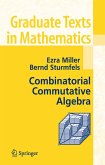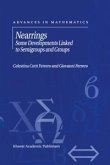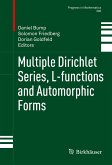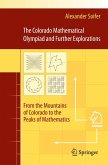Dieser Download kann aus rechtlichen Gründen nur mit Rechnungsadresse in A, B, BG, CY, CZ, D, DK, EW, E, FIN, F, GR, HR, H, IRL, I, LT, L, LR, M, NL, PL, P, R, S, SLO, SK ausgeliefert werden.
(Branko Grünbaum)
"In the second edition of an engagingly written book ... addressed to bright high school students and undergraduates, whose contributions are very nicely incorporated into the narrative, the author presents problems belonging to discrete and combinatorial geometry." (Victor V. Pambuccian, Zentralblatt MATH, Vol. 1180, 2010)
"How does one cut a triangle? is a charming little book intended for that most rare of readers: one with little or no knowledge of mathematics above the high school level ... . For such a reader, this book constitutes an opportunity to learn a number of mathematical tools and problem-solving techniques. ... overall there is much in this book to commend it to both expert and novice ... ." (Michael Weiss, Mathematical Reviews, Issue 2011 c)









